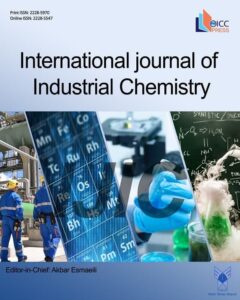Application of ZnO nanorods as an adsorbent material for the removal of As(III) from aqueous solution: kinetics, isotherms and thermodynamic studies
Authors
Abstract
Removal of metals from wastewaters causes a big concern from the environmental point of view due to their extreme toxicity towards aquatic life and humans. Application of As(III) from aqueous solution by ZnO nanorods as adsorbent has been investigated in the present study. The synthesized nanorods were characterized by XRD, FT-IR spectroscopy, SEM, and thermogravimetric analysis. Optimum biosorption conditions were determined with respect to pH, adsorbent dose, contact time, and temperature. The experimental data were examined using the Lagergren’s first-order, pseudo-second-order and intraparticle diffusion kinetic models. The results revealed that the pseudo-second-order kinetic model provided the best description of the data. Langmuir and Freundlich isotherm models were applied to the equilibrium data. The maximum As(III) sorption capacity of ZnO nanorods was found to be 52.63 mg/g at pH 7, adsorbent dose 0.4 g, contact time 105 min, and temperature 323 K. The calculated thermodynamic parameters, ΔGo (between − 5.741, − 5.342 and − 4.538 kJ/mol at 303–323 K), ∆Ho (13.75 kJ/mol) and ∆So (0.0616 J/mol K) showed that the sorption of As(III) onto ZnO nanorods was feasible, spontaneous and exothermic, respectively.



